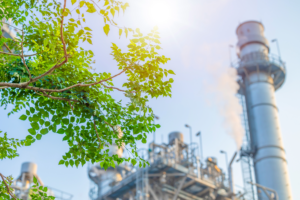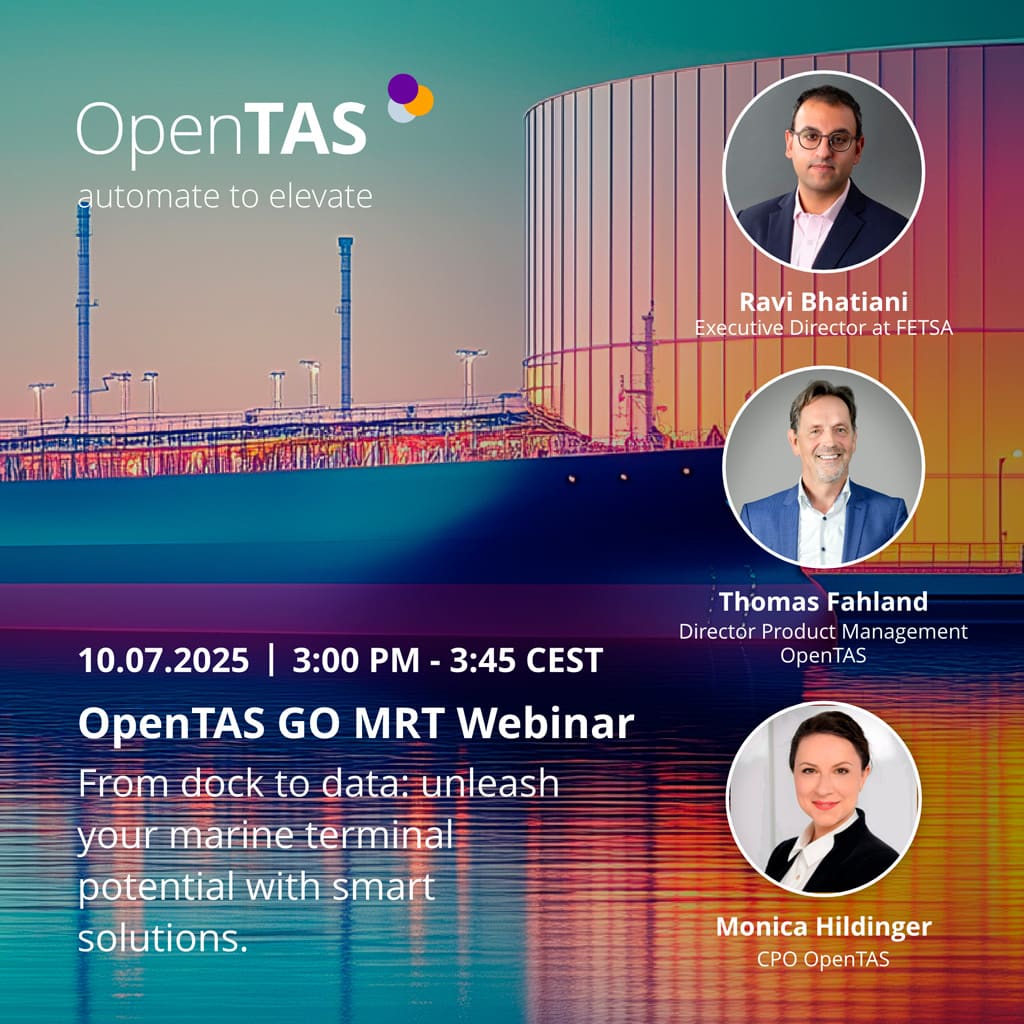Lucia van Geuns and Irina Patrahau from The Hague Centre for Strategic Studies (HCSS) discuss uncertainty and the need for collaboration
The global energy transition will undoubtedly bring challenges for states and companies alike, changing the global power balance and the architecture of economies. The tank storage sector can be part of the solution to these challenges. While the products in storage will change, storage can continue functioning as an essential component of the new energy system. Storing and handling e-fuels, ammonia, liquid organic hydrogen carriers (LOHC), flow batteries, or synthetic aviation fuels are some of the emerging roles of tank storage. To contribute to the decarbonisation of key sectors like transport and industry, tank storage companies should invest in innovation, resilience and adaptation strategies.
The unfolding of the next decades is dominated by uncertainty. Whereas for 2030 increasingly more specific targets, strategies and legislative frameworks are being established, the path toward 2050 remains blurry. The global ambition to reach net zero by 2050 could materialise in a myriad of ways, depending on factors such as technological developments, economic growth, domestic policy choices as well as state behavior in international relations. To a certain extent, the achievement of climate goals set out in the Paris Agreement depends on the degree of success of Europe’s green revolution. Since oil consumption has already been decreasing in Europe, however, it is even more dependent on the actions of the most important players in the oil market, like China, the US, Russia and the OPEC countries. A new geopolitical world is shaped by emerging players in renewable energy technologies and hydrogen production, while novel dependency relations are being established.
THE SITUATION TODAY
Tank storage companies, represented in the Netherlands by the Dutch Association of Tank Storage Companies (Vereniging van Nederlandse tankopslagbedrijven, VOTOB) and in Europe by the Federation of European Tank Storage Associations (FETSA), are essential players in the energy, manufacturing, agricultural and food industries. Vast storage capacity is a strategic asset for Europe. A strong and (partly) self-sufficient domestic industry that relies on sufficient reserves of fuels strengthens Europe’s strategic autonomy. It also contributes to Europe’s ability to influence global markets by contributing to the price-setting of strategic goods such as fuels, chemicals or edible oils. Europe’s maritime and aviation sectors are supported by well-developed infrastructure and available fuels. These strong strategic sectors are not only beneficial for the European economy, but also for its geopolitical influence. Emergency stocks of energy sources strengthen Europe’s security of supply and mitigate the consequences of short-term geopolitical and logistic disruptions.
From an economic perspective, constant flows of feedstock and energy keep the European industry alive. The chemical, health and agricultural sectors are only some of the customers of Europe’s industrial clusters. The European industry brings in enormous added value, provides jobs, enriches human capital, and fosters innovation.
The tank storage sector supports a complex network of actors, from domestic industry players to residential users and international traders:
- They facilitate domestic consumption of energy, edible oils and chemicals.
- They support the European industry.
- They strengthen Europe’s international price-setting and trading hub status.
- They safeguard emergency and military stocks.
MID-TERM OUTLOOK:
TOWARDS 2030
The next 10-15 years bring both threats and opportunities for the tank storage sector. Decarbonisation policies will decrease the European consumption of fossil fuels, but it is uncertain to what extent. In the mid-term, tank storage will have to balance the remaining demand for fossil fuels with the steadily increasing use of low carbon sources. Hydrogen consumption and electrification are set in motion but will not develop quickly enough to already dominate the European energy market in the mid-term (2030-2035). Imports of natural gas are becoming essential for European energy security of supply.
While Europe’s refineries and its chemical industry are losing competitive margins, China is expected to become the world’s largest refiner. The Middle East is ramping up oil production and investing in downstream diversification. Significant reserves and low production costs could allow countries like Saudi Arabia and Qatar to remain ‘the last man standing’ in global oil and gas markets. Europe’s trading position in oil and gas will slowly decline in importance as traders move toward the primary production and consumption centers, i.e. in the Middle East, East Asia, and Africa.
Proactivity, long-term planning, and transparency are key recommendations for storage companies to develop a sustainable license to operate. Existing capabilities, infrastructure and know-how can be used to mitigate the threats and enhance the opportunities. Working together within the sector and other key stakeholders is essential in creating predictability in the market, reducing uncertainty, and facilitating investments.
LONG-TERM OUTLOOK: UP TO 2050
As the next decades are dominated by uncertainty, scenario analysis is the only way of identifying potential pathways to 2050. The geographical shift of the oil production and consumption centers towards the Middle East and Asia up to 2030 makes carbon neutrality pledges in the long-term highly dependent on the actions of regions outside of Europe.
At least up to 2050, countries around the world will become increasingly dependent on the Middle East to provide energy security of supply, before they will be able to rely completely on alternative fuels. Competition between low-cost suppliers in the Middle East might lead to downward pressure on global oil prices, while volatility and market uncertainty will dominate the global market.
At the same time, there is a competition for where the new energy hubs will emerge. Whereas countries in Europe delivered highly ambitious climate strategies, they cannot reach these goals independently. Most of the (green) hydrogen production will likely take place in countries where renewable energy power can be cheaply and easily generated, such as in the Middle East and North Africa. Renewable energy generation in Europe is dependent on critical minerals and technologies largely produced in China. A new geopolitical landscape will emerge, characterised by new dependency relations between producers and consumers, in which Europe will continue being dependent on foreign supplies of energy. Power politics in countries with critical minerals and low-cost hydrogen production facilities will emerge. The development of the new geopolitical landscape is uncertain. The speed and success of the energy transition therefore relies on policy choices, international relations, as well as technological breakthroughs and infrastructure development.
NEXT STEPS
Becoming part of the solution will require collaboration and cooperation between storage companies to establish a unified position. Uncertainty is visible in the adoption process of new energy carriers like hydrogen in Europe, but it is evident that hydrogen in all its forms, carbon capture, utilisation, and storage (CCUS) efforts as well as electricity storage are indispensable to accelerate decarbonisation. Incremental change in both infrastructure and market development is required simultaneously. The tank storage sector should ally with stakeholders such as port authorities, investors, and other actors along the supply chains of fuels and chemicals. Such outreach will be necessary to develop a common strategy for change and to gain a much stronger position in negotiating with political actors. Once a shared strategy is formulated, engagement with local, national and EU political stakeholders should be organised to enhance awareness of the potential of the sector to support the energy transition and its economic value. Most importantly, cooperation with stakeholders and political leaders will emphasise the need for a well-orchestrated transition strategy, focussing on long term goals, preventing unnecessary disinvestments as well as securing the required strategic energy storage.
For more information:
Lucia van Geuns is an experienced energy professional who held research positions at the Netherlands Organisation for Applied Scientific Research (TNO) and the Clingendael International Energy Programme (CIEP) after a career with Shell. She has a background in geoscience, petroleum engineering, economics and planning.
Irina is a strategic analyst at HCSS. Her primary research interest relates to the geopolitical and geo-economic aspects of energy relations and natural resources.
Challenges and opportunities on the short, mid- and long-term regarding the tank storage sector are discussed in a series of HCSS/VOTOB/FETSA papers, which can be downloaded here: https://hcss.nl/report/european-tank-storage-sector/











